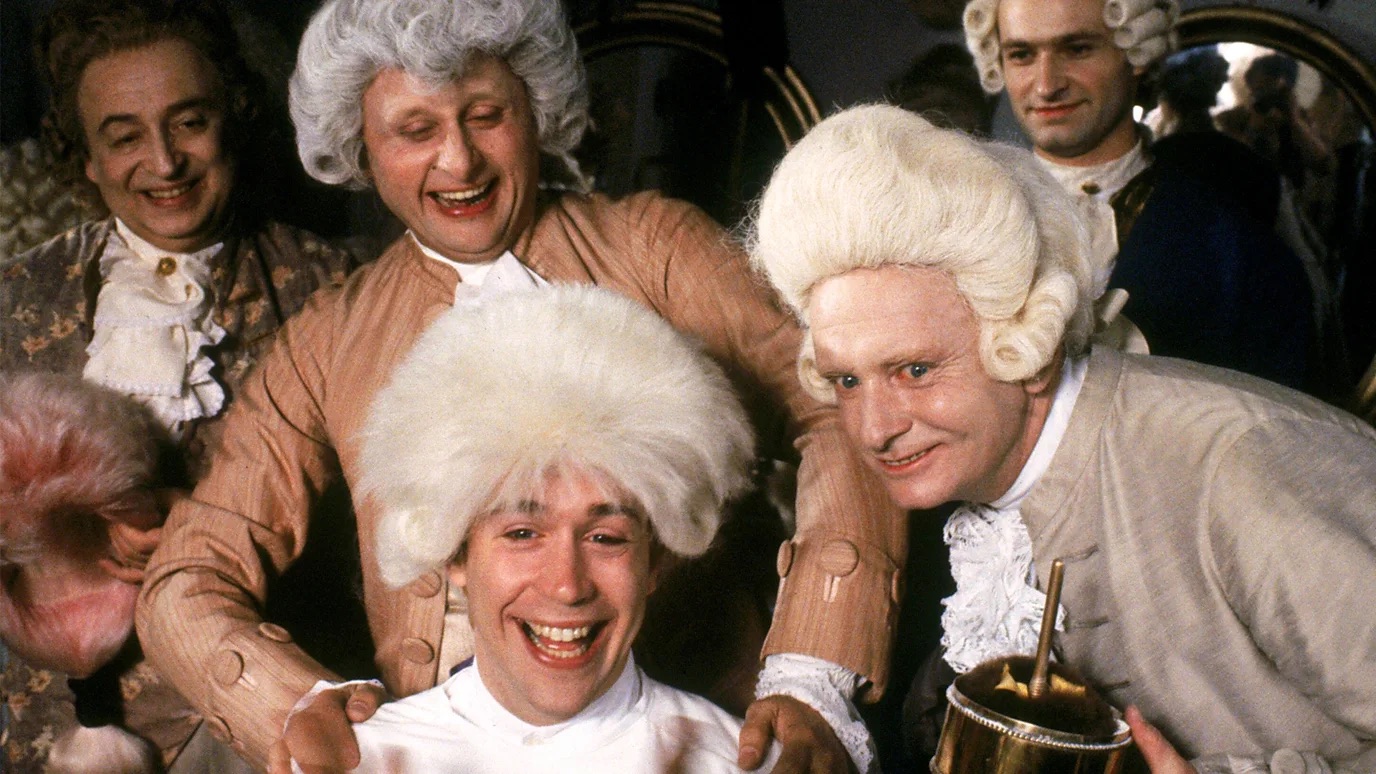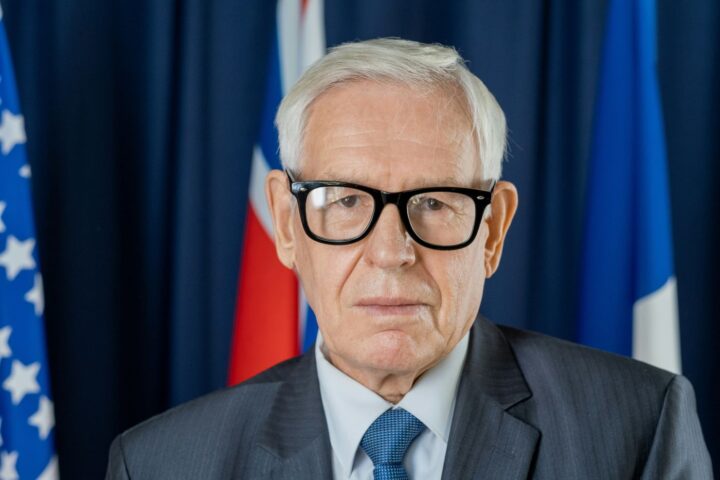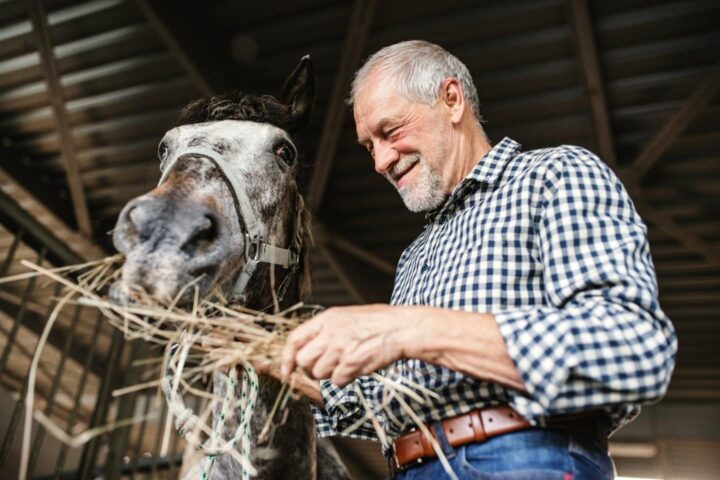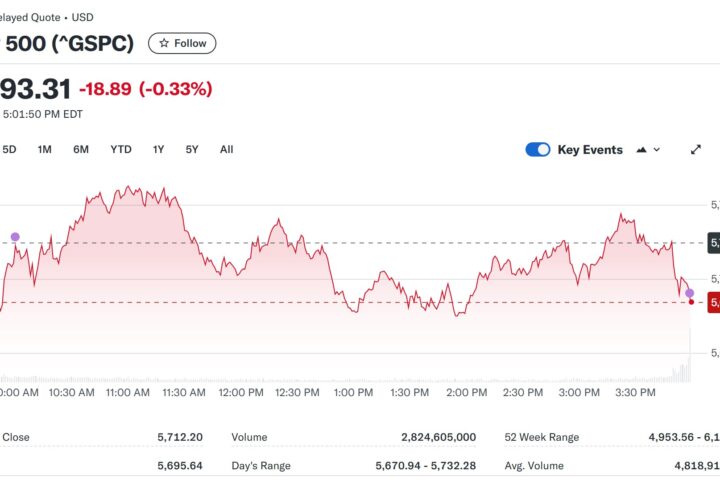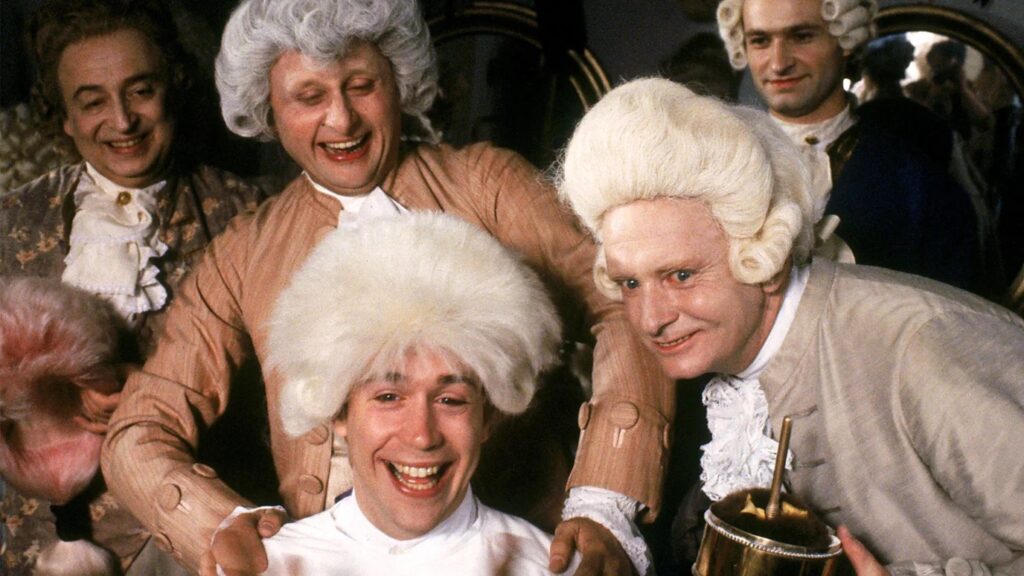
Released 40 years ago this month, Miloš Forman’s best picture-winning Amadeus is often accused of historical inaccuracies – but the film’s critics could be missing the point.
When it premiered 40 years ago, Amadeus drew an initial wave of praise. A historical drama revolving around the rivalry between two composers, Wolfgang Amadeus Mozart and Antonio Salieri, it went on to win eight Oscars, including for best picture. Miloš Forman took home the best director prize, Peter Shaffer won for best adapted screenplay and both of the lead actors were nominated: F Murray Abraham, who played Salieri, beat Tom Hulce, who played Mozart.
But in the years that followed, a backlash grew over what some people saw as Amadeus’s litany of historical errors. An article in The Guardian declared that “the fart jokes can’t conceal how laughably wrong this is”, and the BBC commented that “the film plays shamelessly fast and loose with historical fact”. Salieri, critics noted, was no pious bachelor (as attested by his wife, eight children and mistress), and it’s after all an odd kind of hateful rivalry when the real Mozart entrusted the musical education of his own son to Salieri. As for Mozart’s lewd humor, that cheeky insouciance was actually commonplace in middle-class Viennese society. Most egregiously of all, world-famous Mozart was not dumped in an unmarked pauper’s grave. If this is a homage to history, the complaint goes, it’s akin to Emperor Joseph II fumbling ineptly on the pianoforte and bungling every other note.
But this kind of cavilling may be missing the point. Forman’s aim for Amadeus can be seen as radically different from a typical biopic, and that was to use a fictionalised version of an epic clash between musical composers to allegorise the defining global rivalry of the mid-to-late 20th Century: the Cold War. Put simply, the film may have played fast and loose with 1784 because its real preoccupation was 1984.
Salieri is the Soviet Lada trying to be a Ford Mustang. He can’t be as great as Mozart, so he resorts to undermining and manipulating him – Paul Frazier
The film opens in Vienna in 1823. Grizzled court composer Salieri howls through a bolted chamber door that he has murdered Mozart, then slashes his own throat. Days later, as he convalesces in an asylum, a priest arrives to hear his confession. It doesn’t disappoint. Salieri recounts that as boy he made a vow of chastity to God as an expression of gratitude for, as he sees it, ushering in the providential death of his father to clear the path for his musical development.
Jump ahead some years, and Salieri is now an eminent composer in the court of Joseph II (Jeffrey Jones), where he eagerly awaits an introduction to musical prodigy Mozart. That eagerness curdles when he sees the man in the flesh – he turns out to be a lascivious vulgarian with an ear-splitting cackle. Convinced that God means to mock his own mediocrity, Salieri hurls a crucifix in the fire and vows retaliation. When Mozart’s father dies, Salieri seizes on the misfortune with a dastardly stratagem: dupe Mozart into believing that his father has risen from the grave to commission him to write a requiem, then murder him and pass off the masterpiece as his own. Mozart, feverish and besotted with drink, dies, leaving Salieri addled with bitterness and destined for obscurity.
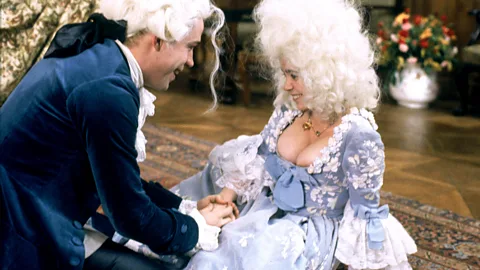
The premise wasn’t original to Forman. Drawing inspiration from Alexander Pushkin’s taut 1830 play Mozart and Salieri, Peter Shaffer wrote a highly stylised play called Amadeus, which premiered in London in 1979. Forman, sitting in on a preview, was entranced by the dramatic rivalry and convinced Shaffer to collaborate with him, not merely to adapt the play for the screen but to “demolish the original, then totally reimagine it as a film”. Across four irascible months cloistered in a Connecticut farmhouse with Shaffer, Forman fundamentally rebuilt the narrative with a fresh palette of political resonances.
The casting process for the coveted roles of Mozart and Salieri rivaled Gone with the Windin scope and behind-the-scenes intrigue, all of which played out over a year and involved meetings with literally thousands of actors. Kenneth Branagh was nearly victorious in landing Mozart, then got dropped from consideration when Forman pivoted to a US cast. Mark Hamill endured grueling hours of auditions, only to be told by Forman: “No one is believing that the Luke Skywalker is the Mozart.” Al Pacino lobbied hard for the part of Salieri, in competition with Mick Jagger, Burt Reynolds, Donald Sutherland and Sam Waterson. In the end, Forman eschewed splashy celebrities for Hulce and Abraham, only to have casting drama explode again when Meg Tilly, slated to play Mozart’s wife, Constanze, broke her ankle playing football: she was replaced by Elizabeth Berridge a week before shooting was to commence. With the plot rebuilt and the cast in place, more than one rivalry was poised to come into focus.

